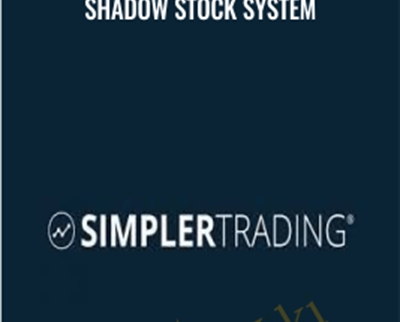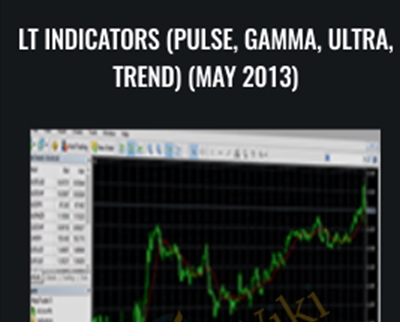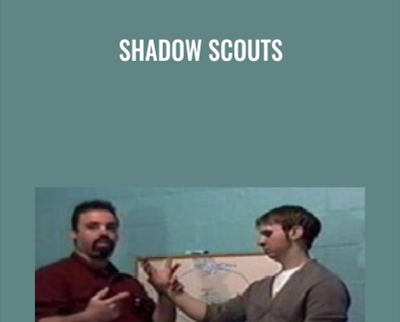2003 Master Class – Gerald Appel
Original price was: $647.00.$65.00Current price is: $65.00.
2003 Master Class – Gerald Appel Download. 1. NASDAQ Composite and Current Volatility
2. The Long Term Moving Average Channel of NASDAQ
3. MACD Patterns of…
🎓 Learn and Grow with 2003 Master Class – Gerald Appel - Original price was: $647.00.$65.00Current price is: $65.00.
Discover your true potential with the 2003 Master Class – Gerald Appel - Original price was: $647.00.$65.00Current price is: $65.00. course. Tailored for individuals at every skill level, this in-depth online program equips you with essential tools and proven strategies to excel in both your personal and professional endeavors.
Salepage link: At HERE. Archive:
Master Class with Gerald Appel
at the January 2003 Caribbean Traders’ Camp
Session 1
Market Indices and Chart Formations
- 1. NASDAQ Composite and Current Volatility
- 2. The Long Term Moving Average Channel of NASDAQ
- 3. MACD Patterns of the S & P 500 Threatening to Break Long Term Downtrend
- 4. NASDAQ /NYSE Index Relative Strength Favors Nasdaq – Bullish
- 5. Bullish and Bearish Chart Patterns 1
- 6. Bullish and Bearish Chart Patterns 2
- 7. Angle Changes
- 8. T-formations
- 9. NASDAQ Composite T-Formations
- 10. Andrew’s Pitchfork
Session 2
Moving Average Convergence-Divergence
- 1. Illustration of MACD Concept
- 2. Introducing the Signal Line
- 3. The Basic Buy and Sell Signal
- 4. Using Divergences to Recognize the Reliable Signals
- 5. Further Examples of Divergences
- 6. Comparing MACD to a Price Momentum Oscillator
- 7. Comparison of MACD and RSI
- 8. Different MACD’s for Buy and Sell Signals
- 9. MACD during a Strong Market Uptrend
- 10. MACD during a Strong Downtrend
- 11. Treasury Bonds, MACD, and a Strong Uptrend
- 12. The Stop-loss Signal for an Unsuccessful Trade
- 13. Using Trendlines to Confirm Buy and Sell Signals
- 14. Long-Term MACD Signals – The Start of a Bull Market
- 15. A Long Bull Market – Then the Crash
- 16. Using Monthly MACD to Define Very Major Trends
- 17. Using Time Cycles to Confirm MACD Signals
- 18. Using Time Cycles – 2nd Example
- 19. When MACD Does Not Provide Timely Signals
- 20. Four Stages of MACD and the Market Cycle
- 21. The 1998 Bottom
- 22. A Bull and then a Bear Market
- 23. Catching the Lows – the 1984 bottom
- 24. A Second Example of Bottom Finding
- 25. A Final Example of Bottom Finding
- 26. Bear Market Rally, 2001 – 2002
Session 3
Riding the Market: Strategies to Stay on the Right Side of Market Trends
- 1. Summary
- 2. Drawdown Illustrated
- 3. Some Risk-Adjusted Performance Measures (Higher = Better)
- 4. “Normal” Risks for Various Investments (not worst cases)
- 5. Basic Risk Control Strategies
- 6. Core Portfolio – Designed to Minimize 1–year Losses
- 7. Four Parts of the Portfolio
- 8. Core Portfolio Performance History
- 9. Minimum Risk Portfolio
- 10. Core Portfolio at Vanguard
- 11. Core Portfolio with ETF’s
- 12. Concept of Relative Strength
- 13. Example of Relative Strength Analysis: NYSE Composite Rises Faster when NASDAQ is Strong
- 14. Large Cap Value/Growth Model
- 15. SVX Divided by SGX (monthly)
- 16. Performance of SVX/SGX Model since 1994
- 17. Average Performance of Large Cap Value Mutual Funds vs. Large Cap Growth Mutual Funds since 1962
- 18. Large Cap Value Divided by Large Cap Growth
- 19. Large Cap versus Small Cap Model
- 20. S & P 500 Divided by S & P 600 (monthly)
- 21. Performance of S & P 500/SML Model since 1995
- 22. S & P 500 Index vs. Average Small Cap Mutual Funds since 1979
- 23. S & P 600/Cash Timing Model Rules
- 24. S & P Small Cap/Cash Timing Model
- 25. S & P 600/Cash Model Results
- 26. Interest Rates and Stocks
- 27. Stocks and Interest Rates
- 28. Results: Rates and Stocks, 1962 – 2002
- 29. Avoid Sales Loads
- 30. How is Your Fund Doing?
- 31. Mutual Funds vs S & P 500
Session 4
Four Presentations
A – Analyzing the Stock Market with Moving Average Trading Bands
- 1. Basic Concept of Moving Average Trading Channel
- 3. Different Phases within the Moving Average Trading Channel (NASDAQ Composite, Daily)
- 3. Different Phases within the Moving Average Trading Channel (NYSE Composite, monthly)
- 4. Long-Term Weekly Chart –NYSE Index 21-Week Average, 6% bands
- 5. Moving Average Channels in a Flat Market Period – 1991-1992
B – Volatility Peaks and Major Market Bottoms
- 6. The NASDAQ Composite and Historical Volatility, 1970 – 1979
- 7. The NASDAQ Composite and Historical Volatility, 1980-`1989
- 8. The NASDAQ Composite and Historical Volatility, 1990-1999
- 9. The NASDAQ Composite and Historical Volatility,2000-2002
- 10. Peak Volatility, Subsequent Market Movement
C – The 4 Pillars of Investment Success – Long-Term Growth with Greater Safety
- 11. Investment Strategies for Uncertain Times
- 12. Why Safer Stock Funds Work Better
- 13. Avg % Gain in Winning Months – Avg % Loss in Losing Months Based on Volatility Groups
- 14. Gain Per Year, Based on Volatility Groups – 20 Years
- 15. Closed Drawdowns Based on Volatility Groups
- 16. Fund Rotation Strategy – Performance by Performance Rank
D – The Power of NASDAQ
- 17. NASDAQ Composite – NASDAQ/NYSE Minus 10 Week Moving Average, 1970-1973
- 18. NASDAQ Composite – NASDAQ/NYSE Minus 10 Week Moving Average, 1980-1984
- 19. NASDAQ Composite – NASDAQ/NYSE Minus 10 Week Moving Average, 1997-2002
- 20. NASDAQ Composite When NASDAQ is Dominant vs. NASDAQ buy and Hold – NYSE Composite When NASDAQ is Dominant vs. NASDAQ buy and Hold
- 21. NASDAQ Relative Strength Summary
- 22. Relative Strength with Intermediate Monetary Filter
📚 Why Choose the 2003 Master Class – Gerald Appel - Original price was: $647.00.$65.00Current price is: $65.00. Course?
The 2003 Master Class – Gerald Appel - Original price was: $647.00.$65.00Current price is: $65.00. course is more than just an online program—it's a transformative learning experience designed to help you reach new heights. Here's why learners from around the world trust WSOLib:
- ✅ Comprehensive and easy-to-follow course content.
- ✅ Practical techniques that you can apply immediately.
- ✅ Lifetime access to all course materials.
- ✅ Learn at your own pace, from anywhere in the world.
- ✅ No hidden fees—one-time payment with full access.
💻 What’s Included in the 2003 Master Class – Gerald Appel - Original price was: $647.00.$65.00Current price is: $65.00. Course?
This course comes with:
- 🎥 High-quality video lessons that guide you step-by-step.
- 📄 Downloadable resources and course materials.
- 🧩 Interactive exercises to enhance your learning experience.
- 📧 Access to customer support for any assistance you need.
Specification: 2003 Master Class – Gerald Appel
|
User Reviews
Only logged in customers who have purchased this product may leave a review.

Original price was: $647.00.$65.00Current price is: $65.00.












There are no reviews yet.